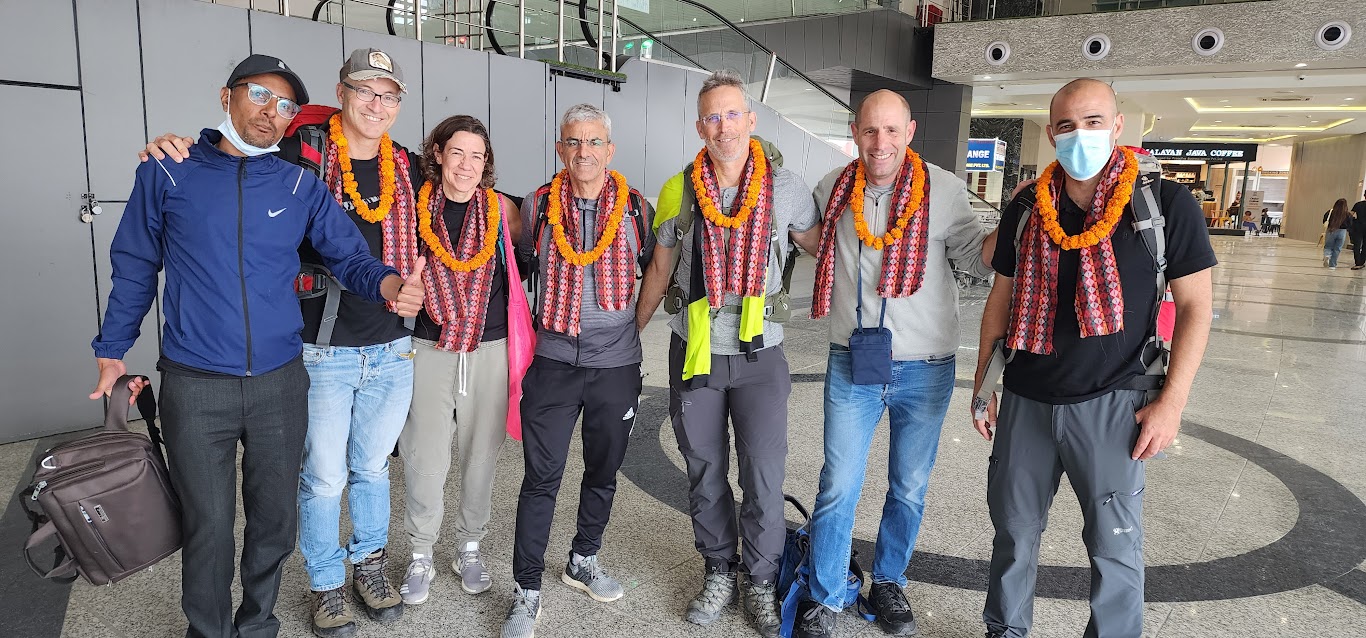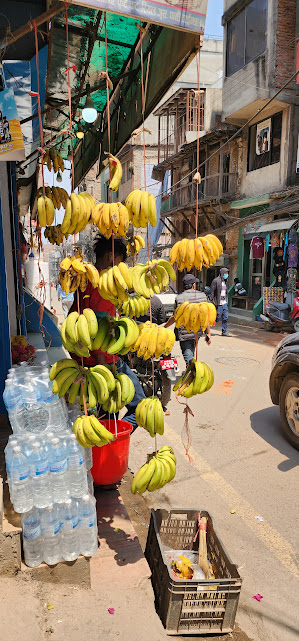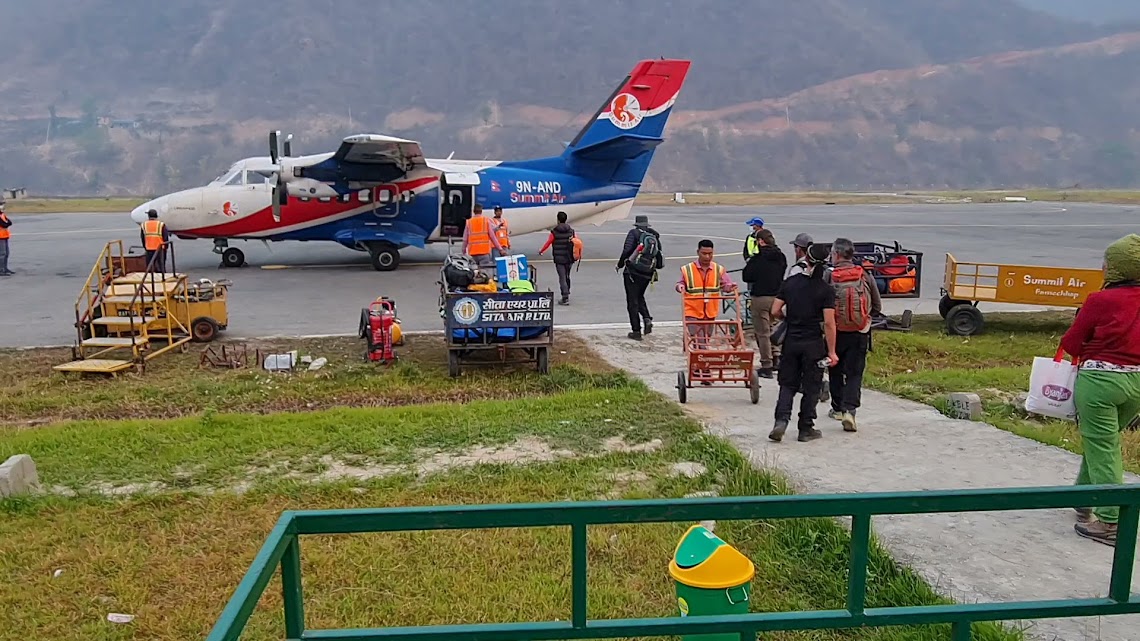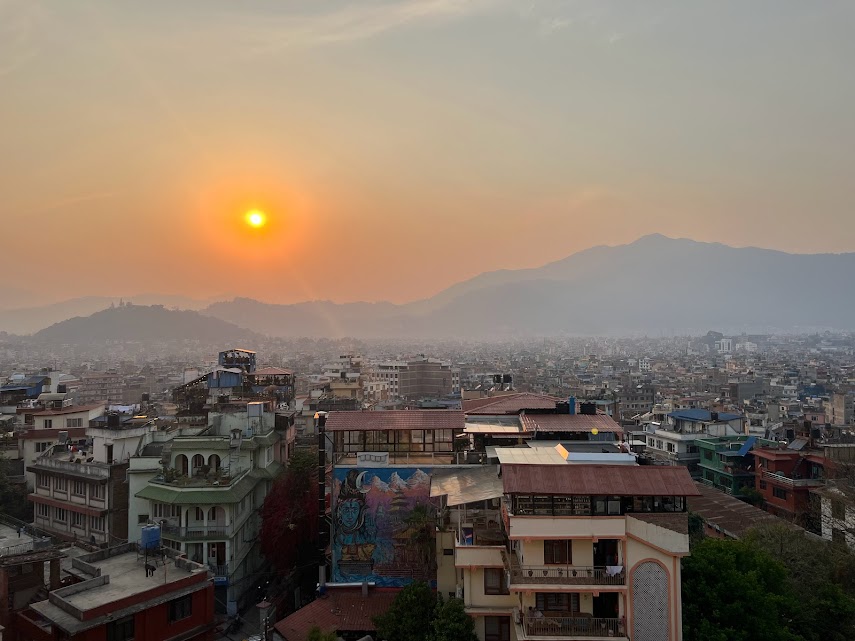from 1 review
Daily Tour
25 people
___

Upon arrival, you'll be met at the airport and transferred to your hotel, ensuring a smooth transition from travel to relaxation. This gives you time to acclimate, rest, and prepare for the trek ahead. The welcome dinner and briefing are essential components of the journey, providing an opportunity to meet your guide and fellow trekkers. During this time, you'll discuss the details of your trek, verify your gear, and make any necessary adjustments to your plans. An overnight stay at the hotel ensures you're well-rested and ready to start your trek with energy. If you have any questions about what to pack or what to expect during the briefing, feel free to ask!

Your day before embarking on the trek is thoughtfully planned, offering a perfect blend of cultural exploration and preparation. Visiting Kathmandu's key historical sites, such as the Monkey Temple (Swayambhunath), Boudhnath Stupa, Pashupatinath Temple, and Patan Durbar Square, gives you a fascinating glimpse into Nepal's cultural heritage and architectural craftsmanship. These iconic sites are rich in spiritual significance and offer stunning views of Nepal's history. In the afternoon, you will focus on trek preparation. Meeting with your guide adds a personal touch and ensures you are well-prepared for the journey ahead. The availability of duffel bags and assistance with purchasing any necessary gear is a practical step to ensure your readiness. If you have questions about packing, or want to know more about the historical sites you'll be visiting, feel free to ask!
The journey from Kathmandu to Dhap is both scenic and strategically important, as it sets the stage for your trek into the Solu-Khumbu region. Driving east from Kathmandu to Dhulikhel, and then descending into the Sun Koshi Valley, reveals dramatic changes in elevation and landscape. As the route moves south into the Terai, then west to Bardibas, you will traverse diverse geographic areas before heading north through the forested hills on the Sagarmatha Raimarg to Dhap. This route offers a preview of the varied terrain and climates you will encounter during your Nepal trek. Spending the night in Dhap ensures a good rest before starting the trekking portion of your adventure. If you have questions about the weather, terrain, or how to best acclimatize during this phase of the trek, feel free to ask!
Your trek from Sigane to Jhapre offers a journey filled with breathtaking landscapes and rich cultural experiences. The trail winds through terraced farmlands and mixed forests, especially stunning during the blooming of rhododendrons, showcasing Nepal's natural beauty. Enjoy rewarding views of Shorung Himal, as well as glimpses of Everest and other surrounding peaks from the upper grounds. Stopping for lunch in Sigane allows a brief rest and an opportunity to experience local hospitality. As you continue along Phokle Danda, you will witness the impact of sustainable development through the hydroelectric scheme that powers the region. Ending your day in Jhapre, a less-traveled area in the Everest region, offers a peaceful night steeped in local customs and traditions. This trek presents a unique blend of nature, culture, and sustainability in the heart of Nepal.
The segment of your trek leading to Pikey Peak Base Camp is an immersive blend of natural beauty and cultural experiences. As you ascend from Tolu Gompa to Lamje Danda and Lhamuje Gompa, you’ll witness a shift from lush forests to alpine scrub, reflecting the changing altitude and environment. These gompas offer a peaceful and spiritual backdrop against the rugged terrain. The route to Bhulbhule provides a scenic spot for lunch, where you can enjoy panoramic views of mountain peaks, making it a memorable highlight of your journey. Trekking along Toriphule Danda, you'll visit a local dairy producing yak cheese, giving you a unique insight into the region’s economy and an opportunity to taste local specialties. Ending your day at Pikey Peak Base Camp allows time for rest and preparation before your summit attempt. This section of the trek is vital for acclimatization, while also offering a chance to soak in the tranquil beauty of the high-altitude landscape. This trek is a perfect blend of nature, culture, and adventure in the Everest region.
Your early morning trek to the summit of Pikey Peak is designed to capture the awe-inspiring sunrise views over the Himalayas. Starting before dawn, the trail ascends the western flank, reaching the summit in about an hour and a half. From the top, you’ll be rewarded with panoramic views of Nepal’s Himalayan chain, including some of the world’s highest peaks. After soaking in the breathtaking views and snapping photos, you’ll return to the lodge for a well-deserved breakfast. The descent takes you through picturesque landscapes, including oak and rhododendron forests, adding to the trek’s scenic diversity. Lunch at Jasmane Bhanjyang offers another stunning viewpoint, making it an ideal stop. The afternoon journey continues through the forest, linking up with the historic Jiri-Everest trail at Kande, a region rich in natural beauty. This area offers a tranquil setting to finish the day. Overnighting in Kande gives you a peaceful space to reflect on the day’s experiences. This segment of your trek is not only physically rewarding but also offers stunning natural vistas and cultural insights, making it a perfect part of your Pikey Peak Trek in the Everest region.
Descending from the higher elevations, today’s trek to Junbesi will feel distinctly different. The journey begins with a downhill path beyond the teahouse at Lamjura La, a key pass marking a transition in both elevation and vegetation. As you continue eastward into the Taktor Khola Valley, you'll witness the shift from dense coniferous forests to lush, terraced farmlands that define the lower slopes. This change in scenery highlights the region's diverse agricultural practices and landscapes. Overnighting in Junbesi offers a wonderful opportunity to experience the local Sherpa culture and hospitality. Junbesi is a charming village that serves as a hub for trekkers, providing insights into rural life in Nepal. The village is renowned for its picturesque setting and welcoming atmosphere, making it the perfect place to rest and recharge after a day of descent. This part of your Pikey Peak Trek allows you to experience the vibrant mix of cultural and natural beauty in the Everest region.
Today’s trek takes you along the scenic banks of the Junbesi Khola, heading south to where it meets the Dudh Kund Khola at Benighat. This section of the journey offers serene river views, providing an opportunity to observe the natural dynamics of the region. As you progress beyond the confluence, the terrain becomes gentler, and the valley broadens, offering easier walking conditions. Continuing on, you’ll reach Phaplu, a small town with an airport, offering a glimpse into a more connected part of the Solu-Khumbu region. From there, a visit to Salleri, the administrative center of the region, provides a unique opportunity to explore local governance and cultural aspects. Overnighting in Phaplu offers the comfort of staying in a town with more facilities and services, a pleasant change after trekking in more remote areas. This part of your Pikey Peak Trek blends scenic river views with cultural exploration, enriching your experience of Nepal treks in the Everest region.

After your early breakfast in Phaplu, you'll begin the return drive to Kathmandu, where you will be transferred back to your hotel. This marks the end of your Pikey Peak Trek adventure. You will have the remainder of the day free to relax or explore Kathmandu further. Whether you choose to visit additional historical sites in Kathmandu or simply unwind, it’s a perfect way to conclude your journey in Nepal. In the evening, enjoy a farewell dinner with your trekking group—an ideal occasion to reflect on your adventure, share memories, and celebrate the completion of your trek. This dinner is not just a celebration of the trek’s end but also a chance to say goodbye to new friends and potentially plan your next Nepal trekking adventure with Nature Heaven Treks and Expedition, the best trekking agency in Nepal.

As your Pikey Peak Trek concludes, the Nature Heaven Treks and Expedition team ensures a smooth transition by arranging your transfer from the hotel to the international airport based on your flight schedule. If you're considering extending your stay in Nepal, there are plenty of additional adventures and relaxing experiences to explore. Whether you're interested in further treks in Nepal, cultural tours, or simply unwinding in the stunning surroundings of the Himalayas in Nepal, let the team know. They can help facilitate your plans for more unforgettable experiences, ensuring you make the most of your Nepal tour with the best trekking agency in Nepal.
Allow our experts at Nature Heaven Treks and Expedition to help you Plan one of the most Memorable Vacations based on your interests with their in-depth knowledge of the Himalayas, they can craft the journey of your dreams considering your preferred location, time frame, and Budget
The Pikey Peak Trek is considered moderately challenging, suitable for reasonably fit individuals due to its high altitude and steep sections.
The Pikey Peak Trek typically lasts between 5 to 7 days, depending on the chosen route and walking pace.
The cost of the Pikey Peak Trek typically ranges from $400 to $700, depending on the tour operator and included amenities.
Yes, a beginner can undertake the Pikey Peak Trek with proper preparation and physical conditioning, as it is moderately challenging.
Yes, a traditional person can undertake the Pikey Peak Trek if they are physically prepared and acclimatized to the altitude.
Yes, Pikey Peak Trek offers breathtaking views of Everest and is ideal for those seeking a moderate trekking experience.
The best time for Pikey Peak Trek is during the spring (March to May) and autumn (September to November) seasons.
It's generally okay to drink alcohol in moderation during the Pikey Peak Trek, but staying hydrated is more important.
You typically don't need a tent for the Pikey Peak Trek as there are tea houses and lodges along the route.
Wifi availability can be limited along the Pikey Peak Trek route, especially in more remote areas. It's best to inquire locally.
Pikey Peak Trek can be quite cold, with temperatures dropping below freezing, especially at higher elevations. Proper clothing is essential.
Pikey Peak Trek is generally less crowded compared to some other treks in the Everest region, offering a quieter experience.
lymdzo